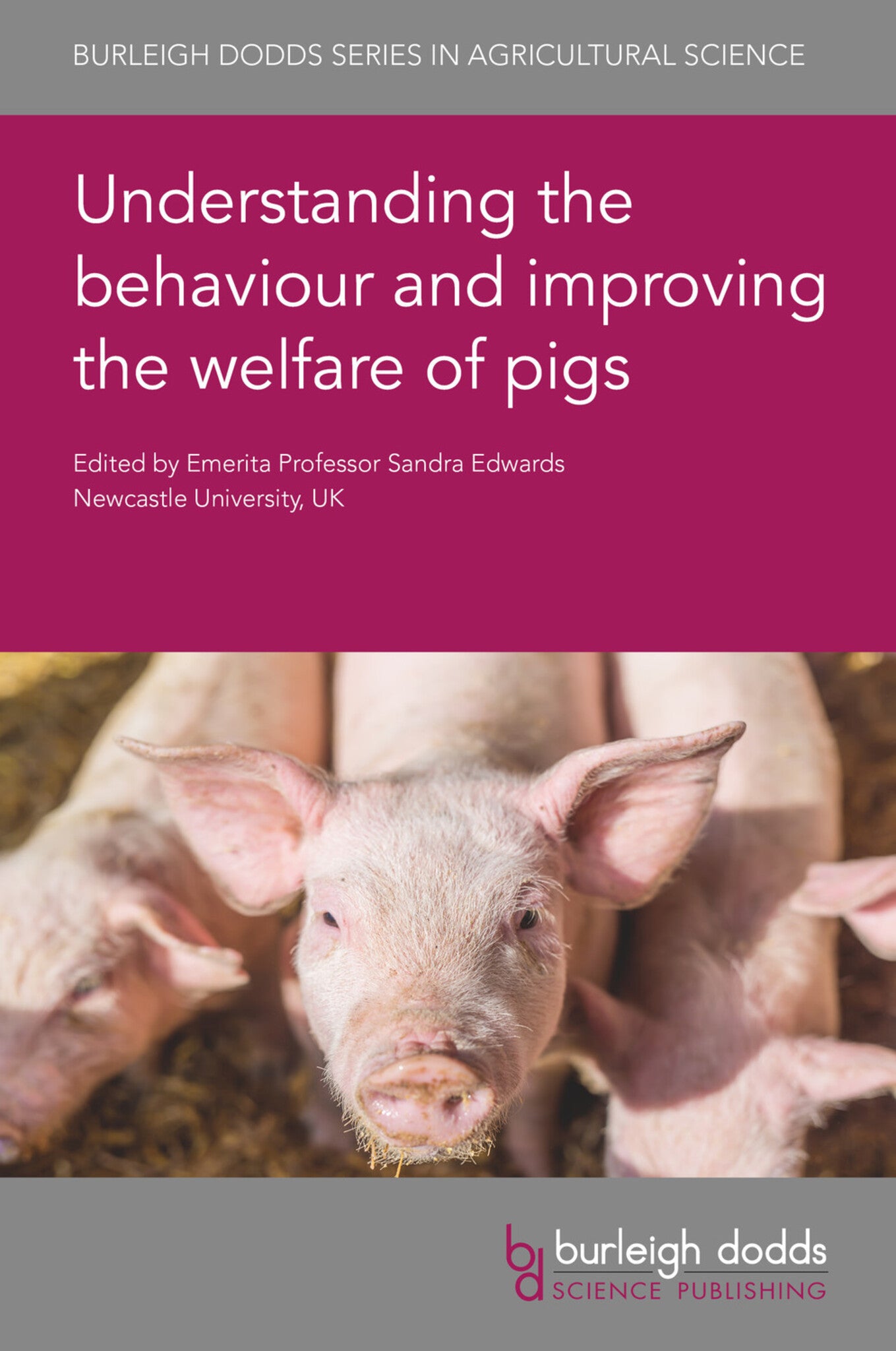We're sorry. An error has occurred
Please cancel or retry.
Understanding the behaviour and improving the welfare of pigs

Some error occured while loading the Quick View. Please close the Quick View and try reloading the page.
Couldn't load pickup availability
- Format:
-
29 January 2021

- Emphasises advances in understanding pig behaviour as the foundation for understanding and improving welfare
- Comprehensive coverable of welfare issues across the value chain, covering breeding and gestation, farrowing and lactation, weaning, growing and finishing as well as transport, lairage and slaughter
- Particular focus on ways of assessing and reducing pain in such areas as tail docking and castration

TECHNOLOGY & ENGINEERING / Agriculture / Animal Husbandry, Animal husbandry, TECHNOLOGY & ENGINEERING / Agriculture / Sustainable Agriculture, Sustainable agriculture

“The book has excellent chapters that are actually too good to ‘just’ be book chapters. The quality of some chapters far bypasses some of the existing peer-reviewed literature reviews that are accessible online. I therefore encourage researchers to cite the book chapters and to use them as a reference work for research ideas and as guidance to improve research practices.” (Dr Irene Camerlink, Institute of Genetics and Animal Biotechnology, Polish Academy of Sciences, Poland)
Part 1 Determinants of behaviour
1.Advances in understanding the genetics of pig behaviour: Lotta Rydhmer, Swedish University of Agricultural Sciences, Sweden;
2.Developmental influences on pig behaviour: Giuliana Miguel-Pacheco and Yolande M. Seddon, University of Saskatchewan, Canada;
Part 2 Management of behaviour in different production stages
3.Optimising pig welfare in breeding and gestation: Paul H. Hemsworth, University of Melbourne, Australia;
4.Optimising sow and piglet welfare during farrowing and lactation: Emma M. Baxter, Animal Behaviour and Welfare Team, Animal and Veterinary Sciences Research Group, SRUC, UK; and Sandra Edwards, Newcastle University, UK;
5.Optimising pig welfare at the weaning and nursery stage: Nicole Kemper, University of Veterinary Medicine Hannover, Germany;
6.Optimizing pig welfare in the growing and finishing stage: Arlene Garcia and John J. McGlone, Texas Tech University, USA;
7.Optimising pig welfare during transport, lairage and slaughter: Luigi Faucitano, Agriculture and Agri-Food Canada, Canada; and Antonio Velarde, Institute of Agrifood Research and Technology, Spain;
Part 3 Current welfare issues
8.Evidence of pain in piglets subjected to invasive management procedures: Armelle Prunier and Céline Tallet, PEGASE, INRAE, Institut Agro, France; and Dale Sandercock, Scotland’s Rural College (SRUC), UK;
9.Alternatives to castration of pigs: Emma Fàbrega, IRTA, Spain;
10.Understanding and preventing tail biting in pigs: Sandra Edwards, Newcastle University, UK; and Anna Valros, University of Helsinki, Finland;
11.The role of enrichment in optimizing pig behaviour and welfare: Sandra Düpjan and Liza R. Moscovice, Institute of Behavioural Physiology – Leibniz Institute for Farm Animal Biology Dummerstorf, Germany; and Birger Puppe, Institute of Behavioural Physiology – Leibniz Institute for Farm Animal Biology Dummerstorf and University of Rostock, Germany;
Part 4 Assessment of welfare states
12.Physiological and behavioral responses to disease in pigs: M. D. Pairis-Garcia and B. K. Wagner, North Carolina State University, USA;
13.Assessing emotions in pigs: determining negative and positive mental states: Eimear Murphy, Luca Melotti and Michael Mendl, Bristol Veterinary School, University of Bristol, UK;
14.Welfare assessment of pigs: Björn Forkman, University of Copenhagen, Denmark;
15.Advances in technologies for monitoring pig welfare: Maciej Oczak, University of Veterinary Medicine Vienna, Austria; Kristina Maschat, FFoQSI GmbH, Austria; and Johannes Baumgartner, University of Veterinary Medicine Vienna, Austria;



